The Gorham Manufacturing Company
The Gorham Manufacturing Company was one of the world's giants in the fields of silversmithing and sculptural foundry work.
The Gorham Manufacturing Company was founded in 1831 in Providence, Rhode Island, by Jabez Gorham silversmiths of the 19th century. There he learned to make coin-silver flatware (lightweight eating utensils made from lightweight, rolled silver) which formed the mainstay of his business in the early years.
In 1848 Gorham's son John took over as the head of the company. He was determined to grow the company and
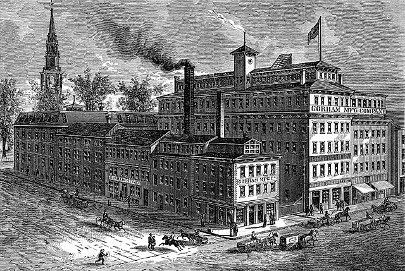 and Henry L. Webster. Gorham had apprenticed with Nehemiah Dodge, one of Providence's most respected
traveled to England to purchase the first steam-powered drop press that was used in the United States to
produce silver flatware. The increased efficiency allowed him to lower prices and increase production,
eventually leading to Gorham's position as one of the largest silver manufactories in the world.
Such was Gorham's expertise and dominance in the marketplace that even Tiffany & Co. outsourced all
its silverware production to Gorham.
and Henry L. Webster. Gorham had apprenticed with Nehemiah Dodge, one of Providence's most respected
traveled to England to purchase the first steam-powered drop press that was used in the United States to
produce silver flatware. The increased efficiency allowed him to lower prices and increase production,
eventually leading to Gorham's position as one of the largest silver manufactories in the world.
Such was Gorham's expertise and dominance in the marketplace that even Tiffany & Co. outsourced all
its silverware production to Gorham.
Between the years of 1879 and 1893 Gorham had displays at every International Fair where they won both public accolades and prizes. At the Columbian Exposition alone Gorham won 47 prizes for excellence.
Since 1860 Gorham had tried to expand into other metals as well but customers refused to pay a Gorham premium for flatware produced in baser metals. Yet the expertise gained in these attempts was not totally lost and its bronze foundry operations were becoming very popular with sculptors. By 1890 Gorham had built the world's largest bronze-casting foundry and by 1920 the company employed almost 2,000 workers. Its art foundry produced many sculptures for the great American sculptors of the day. More than 700 Gorham sculptures are listed in the Smithsonian inventory alone.
The Great Depression was not kind to Gorham as production came to a standstill. The company had to lay off many workers but it did its best to keep the artisans employed as long as possible. Gorham initiated an effort to produce hundreds of examples of 19th century hollowware from the original dies. Artisans painstakingly reproduced the samples from the original designs and dies and the pieces created then are now often the only surviving examples of certain patterns.
The end came in 1967 when Textron purchased the Gorham Manufacturing Company. Gorham ceased operating as an independent business and the new owners started reducing the quality of Gorham's traditionally high-end products in an attempt to regain marketshare, an attempt that was ultimately unsuccessful. The former Gorham, now a division, was resold to Dansk International Designs in 1989, to the Brown-Foreman Corporation in 1991, and to Department 56 in 2005.
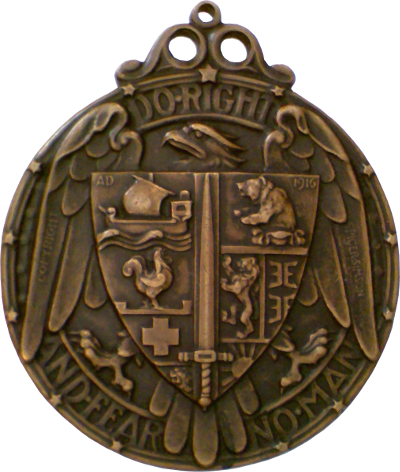
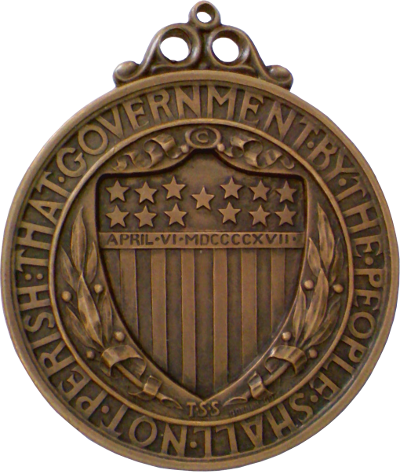
This medal's obverse bears the Allied arms on shield over American Eagle. Around, DO · RIGHT / AND · FEAR - NO · MAN; on shield, AD - 1916; on wings, COPYRIGHT / SPICER · SIMSON
The reverse bears American shield with stars and sripes framed by two laurel branches; under stars, APRIL · VI · MDCCCCXVII ·. Around, : THAT · GOVERNMENT · BY ·THE · PEOPLE · SHALL · NOT · PERISH; above and below shield, © / T · S · S; under right branch GORHAM CO.
The motto on the obverse is taken from the inscription of George Washington's dress sword. A limited but unknown number of these large medals were offered at a cost of $20 in bronze and $30 in silver. The medal was conceived by the American Fund for French Wounded with the profits supporting relief work for French soldiers and civilians.
The circular medal measures 63.4mm in diameter (74.8mm with loop) and was struck in bronze and silver by the Gorham Company. No mintage is reported.
References: Baxter 315, Marqusee 362
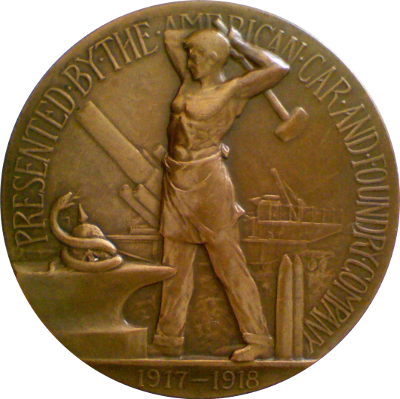
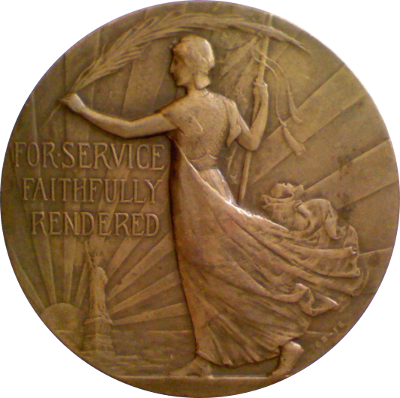
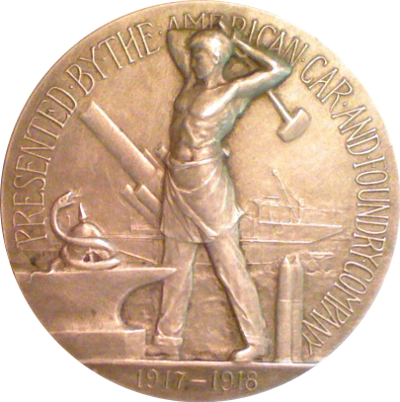
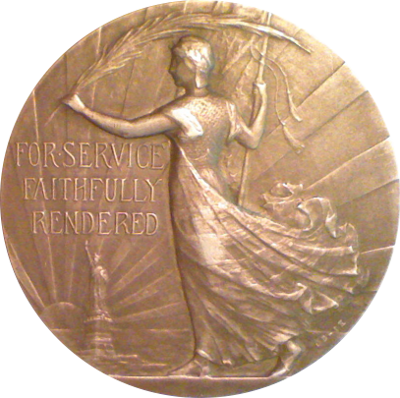

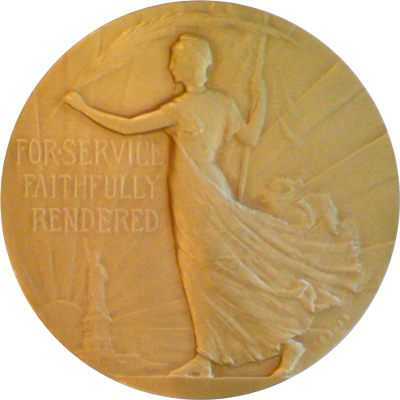
This medal's obverse bears worker about to strike snake on anvil with sledge hammer; howitzer in the background. Around, PRESENTED BY THE AMERICAN CAR AND FOUNDRY COMPANY; below, 1917-1918.
The reverse bears Columbia walking l. with palm frond; Statue of Liberty and sun in distance. On left, FOR SERVICE FAITHFULLY RENDERED; lower right, CB - JK.
The medal was presented to the company's employees for their faithful service during World War I. Accompanying the medal was a card containing the following message from William H. Woodlin, the President of the American Car and Foundry Company:
"The enclosed honor medal is awarded as an evidence of the appreciation by this Company of the work by you on its munition contracts, and as a lasting testimonial of the service rendered by you as an industrial soldier in the winning of the great war."
The signature CB - JK inidicates that the medal was a collaboration between Beach and Kilenyi (maybe design and sculpture) but I did not manage to find any evidence supporting the nature of their collaboration. Any additional evidence or a scan of the enclosed card would be appreciated.
This medal measures 63.5mm in diameter and was struck in bronze, silver, and 14k gold by the Gorham Manufacturing Company of Providence, RI. The silver is very rare and the gold exceedingly rare but the mintages are not reported.
References: Marqusee 52
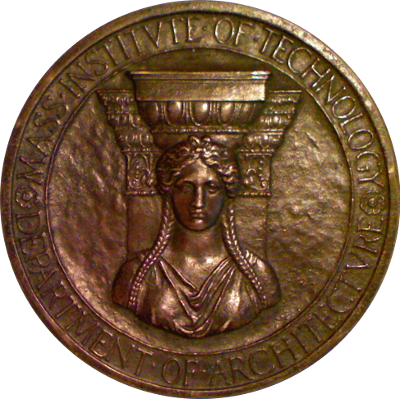
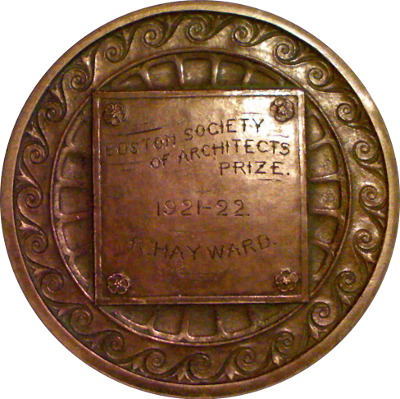
The obverse bears bust of Greek woman with long braided hair before columns. Around, (*) MASSACHUSETTS INSTITUTE OF TECHNOLOGY (*) / DEPARTMENT OF ARCHITECTURE
The reverse bears decorative border with cresting waves around square center panel with engraved dedication, BOSTON SOCIETY / OF ARCHITECTS / PRIZE. / 1921-22. / R. HAYWARD.
The edge is marked GORHAM CO.
Roger Hayward (1899-1979) was a talented artist, architect and inventor. Hayward won this award while he was still a student at MIT. After working as an architect for a few years he moved to California and worked with Linus Pauling, for whom he illustrated many books and journal publications. He is also remembered as an expert in the field of optics and played an important role in the development of the Schmidt-Cassegrain telescope.
The dies for this medal were used by MIT for a number of different awards, including the F.W. Chandler Prize and the School Medal Prize, with the hand-engraved inscription being appropriately worded for each.
The medal was struck in bronze by Gorham Co. Neither mintage nor artist are known.